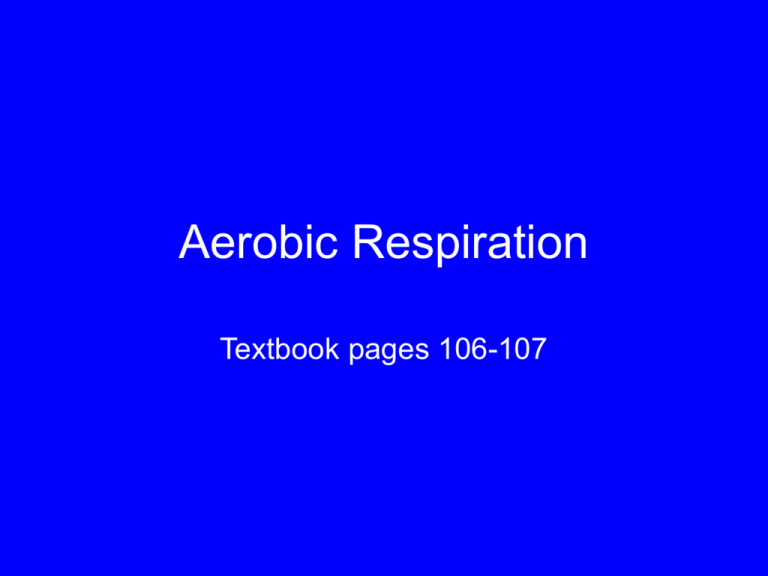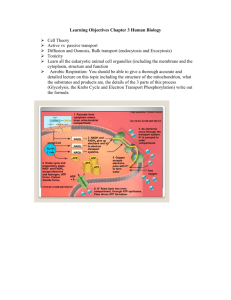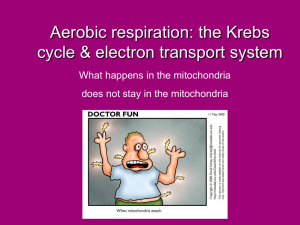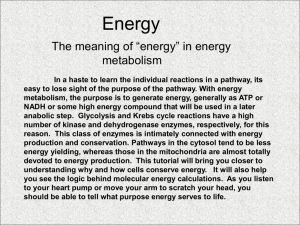Chapter 9: Cellular Respiration
advertisement

Aerobic Respiration Textbook pages 106-107 Aerobic • requires oxygen – oxygen is required for the remainder of cellular respiration Krebs Cycle • process where pyruvic acid is broken down into CO2 in a series of energy-extracting reactions • named after Hans Krebs • also called the Citric Acid Cycle Krebs Cycle • occurs in mitochondria • only produces 2 ATP molecules – but produces a lot of high energy e– e- get stored on NADH and FADH2 • • • • Krebs Cycle Reactants pyruvic acid (also called pyruvate) NAD+ FAD (similar to NAD+ - it is an electron carrier) ADP • • • • Krebs Cycle Products CO2 NADH FADH2 ATP 38 ADP +38 P C6H12O6 + 6O2 6CO2 + 6H2O + energy CELL WORK 38 ATP Electron Transport Chain • uses the high-energy electrons from the Krebs cycle to convert ADP into ATP • occurs in inner mitochondria membranes Electron Transport Chain • series of proteins that pass electrons • movement of e- = ENERGY • causes H+ ions to cross the membrane Electron Transport Chain • last protein is an enzyme that combines electrons with H+ and O2 to form H2O • H+ ions pass through ATP synthase back into the inner membrane by diffusion to produce ATP ATP Production of ETC • produces a maximum of 34 ATP molecules per molecule of glucose – this number can vary and is still being studied ETC Reactants • • • • NADH – from Krebs cycle FADH2 – from Krebs cycle ADP O2 ETC Products • • • • NAD+ FAD ATP H 2O Overall ATP Production • 38 ATP molecules • less than half of the total energy in glucose – the rest is released as heat • ATP supply in cells can get used up in a few seconds – must be constantly regenerated





